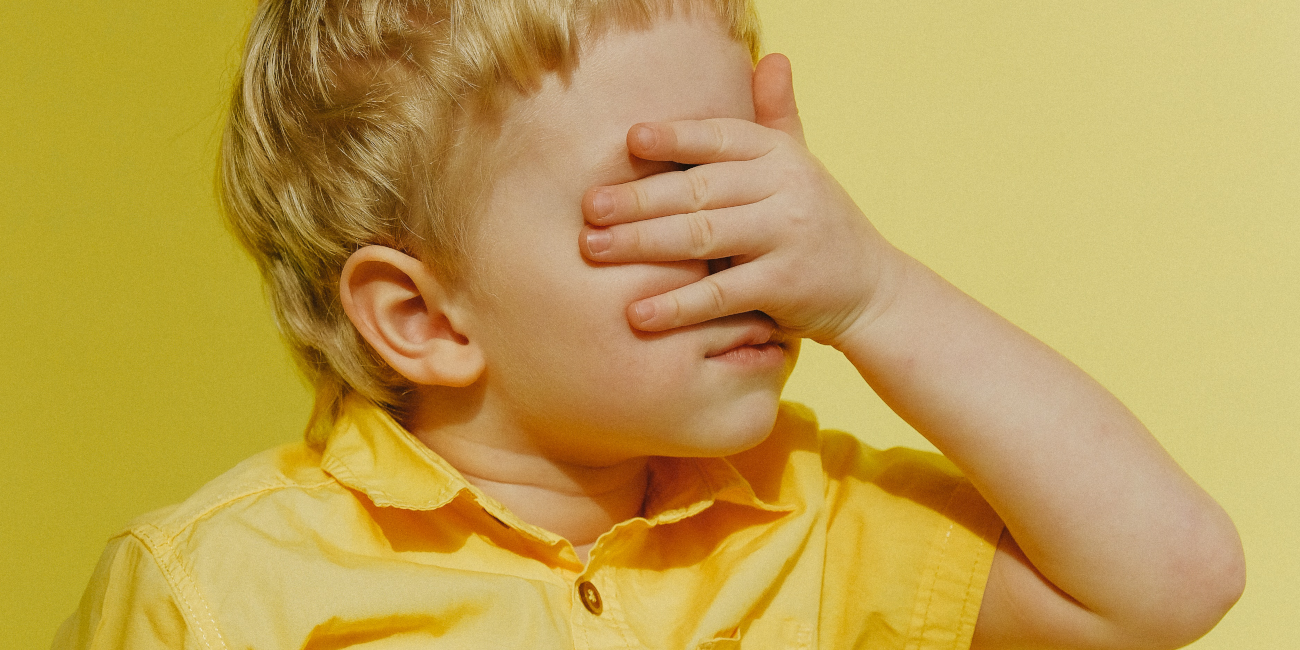The Loneliness Epidemic: Understanding and Combating the 'Friendship Recession'
The Loneliness Epidemic: Understanding and Combating the 'Friendship Recession'
Loneliness has been linked with various mental health problems. Research indicates that people experiencing loneliness are more susceptible to diseases and find recovering from illnesses or injuries more challenging.
Introduction
Loneliness has become a significant societal concern, affecting individuals’ mental and physical health. While loneliness can be a common human experience, its rising prevalence and association with the modern societal trend of having fewer close friends, termed the “Friendship Recession,” is increasingly alarming. This in-depth exploration aims to shed light on the critical studies that highlight the impacts of loneliness, the reasons behind the shrinking circles of close friends, and the potential strategies that can be employed to counteract this growing issue.
Psychological research has highlighted loneliness’s significant negative impacts on mental and physical health. Here is a summary of some of the key findings:
Firstly, loneliness has been linked with various mental health problems. In a comprehensive review, Cacioppo et al. (2010) found that loneliness was associated with higher levels of depression and anxiety. Loneliness has also been linked with lower self-esteem and life satisfaction (Hawkley & Cacioppo, 2010).
Loneliness also negatively impacts physical health. Hawkley and Cacioppo (2010) reported that lonely individuals tend to have poorer sleep quality, which can affect overall physical health and well-being. Furthermore, loneliness has been linked with a higher risk of developing coronary heart disease and stroke (Valtorta et al., 2016).
Loneliness has also been associated with increased systemic inflammation and impaired immune function (Smith et al., 2020). This means that people experiencing loneliness might be more susceptible to diseases and more challenging to recover from illnesses or injuries.
In terms of longevity, loneliness has been found to increase the risk of early mortality. Holt-Lunstad et al. (2015) conducted a meta-analysis showing that the impact of loneliness and social isolation on longevity is comparable to well-established risk factors such as obesity and smoking.
In conclusion, loneliness can severely impact mental and physical health, affecting everything from psychological well-being to immune function and longevity.
People have Fewer Close Friends
Research suggests that loneliness is on the rise and that people report having fewer close friendships in recent years. Several factors may be contributing to these trends, including societal changes and the impacts of technology.
Increasing Loneliness: A study by Cigna (2018) found that loneliness levels have reached an epidemic level in the United States. Almost half of Americans reported sometimes or always feeling alone or left out. Two in five Americans sometimes or always feel that their relationships are not meaningful and isolated from others (Cigna, 2018).
Declining Number of Close Friends: Recent surveys suggest that the average number of close friends reported by Americans has been decreasing over the past few decades. For example, a study by the General Social Survey (2014) found that the average number of confidants that people report having has dropped from about three to two in the last few decades.
Role of Technology and Social Media: Research suggests that increasing technology and social media use may increase feelings of loneliness and fewer close friendships. For example, a study by Primack et al. (2017) found a significant association between social media use and feelings of loneliness.
While these trends are concerning, it is essential to note that they do not mean that people are becoming more antisocial or that friendships are becoming less important. Research consistently shows that social relationships are essential for mental and physical health. Instead, these trends reflect changes in the ways that people form and maintain social relationships, as well as broader societal changes. Future research is needed to understand these trends and develop effective interventions to address loneliness and social isolation.
Indeed, several studies provide statistical data regarding the issues of loneliness and shrinking friendship circles:
Loneliness Levels: The Cigna survey (2018) revealed that about 46% of U.S. adults reported feeling lonely sometimes or always, while 47% reported feeling left out sometimes or always. Furthermore, 43% reported feeling isolated from others, and the same percentage reported feeling they lack companionship and their relationships lack meaning.
Declining Number of Close Friends: In a 2004 study, sociologists McPherson, Smith-Lovin, and Brashears used General Social Survey data to compare social networks in 1985 and 2004. They found that the mean number of confidants people reported having dropped from 2.94 in 1985 to 2.08 in 2004, a statistically significant decline. More shockingly, the number of people who reported having no confidants tripled, from 10% in 1985 to 25% in 2004.
Role of Social Media: In a study published in the American Journal of Preventive Medicine, Primack et al. (2017) found that, compared to people who use social media for less than 30 minutes per day, those who use it for more than two hours a day have twice the odds of perceived social isolation.
This data strongly supports increasing social loneliness and decreasing the number of close friendships in the current age. However, as previously mentioned, it does not necessarily mean people are becoming more antisocial. The changes in how we communicate, driven by technology and societal changes, have a substantial role in these trends.
The Emerging "Friendship Recession"
The term “Friendship Recession” appears to have emerged in recent years in response to studies showing a decline in close friendships and increased social isolation. This phrase metaphorically links economic recession, a temporary economic decline, with the decreasing number of close friendships and social connections people have.
In a 2021 report by the Survey Center on American Life, the term “Friendship Recession” was used to highlight the alarming decline in the number of friends among Americans. The survey found that the number of Americans without a close friend had nearly tripled in a decade, increasing from 3% in 2011 to 9% in 2021. It was found that the average number of close friends (not including relatives) dropped from 3.6 in 1990 to 2.5 in 2021 (Survey Center on American Life, 2021).
This decline in close friendships is attributed to several factors, including an increasing reliance on technology, demographic changes such as delayed marriage and parenthood, and societal shifts like increased work hours (Misra et al., 2016). However, it is essential to note that while the term “Friendship Recession” suggests a decrease in the number of friendships, it does not necessarily imply a decrease in the quality of those friendships or a decrease in human sociability more generally.
Alarming Trend with Alarming Human Impacts
The surge of loneliness in recent years is alarming and carries mental and physical health implications. Humans are social beings by nature, and experiencing loneliness can have detrimental impacts on their well-being.
From a mental health perspective, loneliness has been consistently linked to an increased risk of various psychological issues. Cacioppo and colleagues (2010) conducted extensive research demonstrating the relationship between loneliness and depressive symptoms. People who experience chronic loneliness may have a heightened risk of developing major depressive disorder, anxiety, and other mood disorders.
Similarly, a meta-analysis by Leigh-Hunt et al. (2017) revealed that loneliness is associated with poorer cognitive function and a higher risk of cognitive decline. This suggests that the mental impact of loneliness can extend beyond mood disorders to impact cognitive health.
In terms of physical health, loneliness can be equally harmful. A systematic review conducted by Holt-Lunstad, Smith, Baker, Harris, and Stephenson (2015) found that loneliness and social isolation could be as damaging to physical health as well-established risk factors such as obesity and smoking. They found that greater social connection is associated with a 50% reduced risk of early death.
Moreover, Hawkley and Cacioppo (2010) posited that feelings of loneliness could increase physiological stress responses, leading to elevated blood pressure, decreased immunity, and poorer sleep. Their research indicates that loneliness is not just a psychological issue but also a physical health concern.
To counteract the harmful impacts of loneliness, various interventions can be employed. Hawkley and Cacioppo (2010) advocate for cognitive-behavioral therapies to help individuals reinterpret their social experiences more positively and enhance social skills. In contrast, Masi, Chen, Hawkley, and Cacioppo (2011) suggest that interventions promoting social connections and community engagement may be vital to mitigating the health impacts of loneliness.
In conclusion, loneliness is a significant health concern that poses mental and physical risks. The increasing prevalence of this issue calls for effective strategies to increase social connection and provide psychological support to those struggling with feelings of isolation.
Solutions
The issue of loneliness can be addressed and managed through a multifaceted approach that includes individual and community-based interventions. Here are some strategies:
Cognitive-Behavioral Therapies (CBTs): As per Hawkley and Cacioppo (2010), CBT can be effective in helping people reinterpret their social interactions and enhance their social skills. This form of therapy helps people address negative thought patterns contributing to feelings of loneliness and develop more positive, realistic perspectives on their social relationships.
Social Skills Training: Some people may feel lonely due to difficulties in social interaction. Social skills training can provide these individuals with tools and techniques to communicate effectively, connect, and build meaningful relationships (Spithoven et al., 2017).
Increase Social Connection: Loneliness can often be mitigated by enhancing one’s social network. Engaging in community activities, joining clubs or organizations, volunteering, or using digital platforms to connect with like-minded people can provide opportunities for social interaction and reduce feelings of loneliness (Masi et al., 2011).
Promote Social Support in Work and School Environments: Implementing programs that foster a sense of community and promote social support in workplaces and schools can be beneficial. Mentorship programs, team-building activities, and peer-support networks can provide individuals with opportunities for connection (Holt-Lunstad, 2018).
Policy Interventions: At a societal level, policies can be implemented to create environments that encourage social connection. This could involve urban planning that promotes community interaction, funding for community projects that bring people together, and health and social care policies that address loneliness (Leigh-Hunt et al., 2017).
Promote Physical Health: Regular exercise, a balanced diet, and good sleep hygiene can improve physical health, increase feelings of well-being, and in turn, reduce feelings of loneliness (Hawkley & Cacioppo, 2010).
Professional Help: If feelings of loneliness persist and lead to significant distress, seeking professional help from psychologists or psychiatrists can be crucial. Therapists can provide personalized strategies and interventions; in some cases, medication may be recommended.
It is important to remember that loneliness is common and can be addressed. While it may require effort and time, enhancing social connections, improving social and cognitive skills, and seeking professional help when necessary can significantly mitigate feelings of loneliness.
Summary
In conclusion, the rising levels of loneliness and the corresponding decrease in the number of close friends in society is a pressing concern that carries tangible health risks. Research has demonstrated the significant negative implications of loneliness on mental health, physical well-being, and overall longevity. The ‘Friendship Recession’ concept reflects these societal shifts, where changes in social habits, lifestyle, and increased reliance on technology are major contributing factors. However, several interventions are available, ranging from cognitive-behavioral therapies, social skills training, and community engagement to policy interventions that could help mitigate this issue. The challenge is to effectively implement these strategies, foster stronger social connections, and provide psychological support to individuals battling isolation and loneliness.
References
Cacioppo, J. T., Hawkley, L. C., & Thisted, R. A. (2010). Perceived social isolation makes me sad: 5-year cross-lagged analyses of loneliness and depressive symptomatology in the Chicago Health, Aging, and Social Relations Study. Psychology and Aging, 25(2), 453.
Cacioppo, J. T., Hughes, M. E., Waite, L. J., Hawkley, L. C., & Thisted, R. A. (2006). Loneliness as a specific risk factor for depressive symptoms: cross-sectional and longitudinal analyses. Psychology and Aging, 21(1), 140.
Cigna. (2018). Cigna U.S. Loneliness Index. [Online] Available at: https://www.cigna.com/static/www-cigna-com/docs/about-us/newsroom/studies-and-reports/combatting-loneliness/cigna-2020-loneliness-factsheet.pdf
Hare, R. D., & Neumann, C. S. (2008). Psychopathy as a clinical and empirical construct. Annual Review of Clinical Psychology, 4, 217-246.
Hawkley, L. C., & Cacioppo, J. T. (2010). Loneliness matters a theoretical and empirical review of consequences and mechanisms. Annals of Behavioral Medicine, 40(2), 218-227.
Holt-Lunstad, J. (2018). The potential public health relevance of social isolation and loneliness: Prevalence, epidemiology, and risk factors. Public Policy & Aging Report, 27(4), 127-130.
Holt-Lunstad, J., Smith, T. B., Baker, M., Harris, T., & Stephenson, D. (2015). Loneliness and social isolation as risk factors for mortality: a meta-analytic review. Perspectives on Psychological Science, 10(2), 227-237.
Jones, D. N., & Paulhus, D. L. (2010). Different provocations trigger aggression in narcissists and psychopaths. Social Psychological and Personality Science, 1(1), 12-18.
Leigh-Hunt, N., Bagguley, D., Bash, K., Turner, V., Turnbull, S., Valtorta, N., & Caan, W. (2017). An overview of systematic reviews on the public health consequences of social isolation and loneliness. Public Health, 152, 157-171.
Masi, C. M., Chen, H. Y., Hawkley, L. C., & Cacioppo, J. T. (2011). A meta-analysis of interventions to reduce loneliness. Personality and Social Psychology Review, 15(3), 219-266.
McPherson, M., Smith-Lovin, L., & Brashears, M. E. (2006). Social Isolation in America: Changes in Core Discussion Networks over Two Decades. American Sociological Review, 71(3), 353–375. https://doi.org/10.1177/000312240607100301
Misra, S., Cheng, L., Genevie, L., & Yuan, M. (2016). The iPhone Effect: The Quality of In-Person Social Interactions in the Presence of Mobile Devices. Environment and Behavior, 48(2), 275–298. https://doi.org/10.1177/0013916514539755
Paulhus, D. L., & Williams, K. M. (2002). The Dark Triad of personality: Narcissism, Machiavellianism, and psychopathy. Journal of Research in Personality, 36(6), 556-563.
Primack, B. A., Shensa, A., Sidani, J. E., Whaite, E. O., Lin, L. Y., Rosen, D., ... & Miller, E. (2017). Social media use and perceived social isolation among young adults in the U.S. American Journal of preventive medicine, 53(1), 1-8.
Smith, K. J., Gavey, S., Riddell, N. E., Kontari, P., & Victor, C. (2020). The association between loneliness, social isolation, and inflammation: A systematic review and meta-analysis. Neuroscience & Biobehavioral Reviews, 112, 519-541.
Spithoven, A. W., Lodder, G., Goossens, L., Bijttebier, P., Bastin, M., Verhagen, M., & Scholte, R. H. (2017). Adolescents’ loneliness and depression associated with friendship experiences and well-being: A person-centered approach. Journal of Youth and Adolescence, 46(2), 429–441.
Survey Center on American Life. (2021). American Perspectives Survey: Social Isolation and New Technology. [Online] Available at: https://www.americanprogress.org/issues/religion/reports/2021/06/22/500683/social-isolation-new-technology/
Valtorta, N. K., Kanaan, M., Gilbody, S., & Hanratty, B. (2016). Loneliness, social isolation, and social relationships: What are we measuring? A novel framework for classifying and comparing tools. BMJ open, 6(4), e010799.






